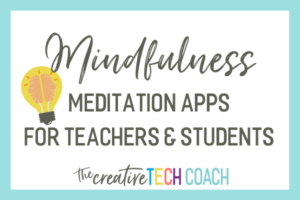Padlet is a great online application to use in the classroom. If you’ve never used it, you really should check it out. You can use it like an online bulletin board, backchannel, and/or collaborative tool.
I’m not sure who introduced it, our instructional coach or our media specialist, but I first heard about Padlet about 2 years ago during a teachers’ meeting at my school. I didn’t use it regularly right away, but after experimenting with it in my classroom and through a graduate course, I came to see what an awesome tool it is and wanted to share the ways I’ve used it in my classroom.
1. Collecting Resources for a Unit
The very first way I ever used Padlet in my classroom was as a digital bulletin board, simply presenting information about a topic. This particular wall (that’s what they call a particular page or board) was actually created by the instructional coach at our school. She was helping us collect resources for our unit on communities and made this for us to share with students.
I used it to present pictures of the different types of communities in our local area. It was not very interactive, but it was a good way to show students images of different communities all at once so they could compare and contrast them.
2. Organizing Students’ Ideas
The second way I used Padlet was to present students’ collective thoughts about gravity. Last spring, students completed KWL (Know/Wonder/Learn) charts as we read and investigated gravity using paper airplanes. I took their responses and put them all on a wall so the whole class could see each others’ responses.
Again, not very interactive. However, it served as a formative assessment of sorts, showing me what students knew and helping me correct misconceptions.
3. Displaying the Morning Message
This year, I began using Padlet to display our Morning Message. It’s not very creative, I know, but just a substitution for writing the message on the white board. Not much more explanation needed.
However, I knew I wanted to use Padlet’s interactive features with my students, but at the time we only had my laptop and one iPad. I knew if I had more devices, I could use Padlet to make the Morning Message more engaging and hold students accountable. But that would have to wait . . .
4. Formative Assessment
In October, as we were gearing up for our accreditation, we were encouraged to use technology creatively in our classrooms. In addition to the one iPad the classroom already had, we were given 2 additional iPads and 2 Chromebooks on loan from the library. So it wouldn’t feel phony and to give students some practice, I had students use Padlets for the first time the week before, At the end of a math lesson on telling time, I they each responded to a question on the wall and it served as a formative assessment for that lesson.
I used it again the following week while the accreditation team was there, again after a lesson on telling time.
And to introduce our first big science unit, by asking students “What is Science?”
I’ve used it in this fashion a few other times, like during our study of measurement. In this instance, students responded collaboratively in groups to apply what they had learned so far about feet and inches.
Having students respond in this manner was very successful! And I was really impressed with the ease students were able to use the application, This got me thinking about I could use Padlet more regularly. Check the second in the series to find out 2 more ways I use Padlet everyday in my classroom. Until then, try using Padlet in your classroom in one of the 4 ways I’ve already shared!



